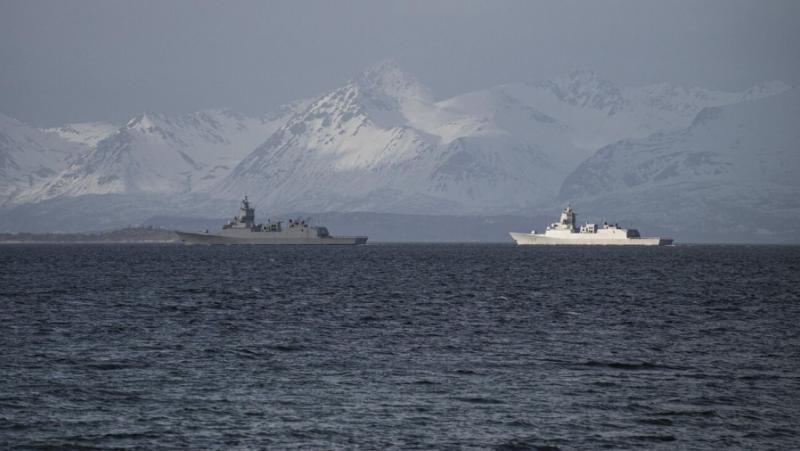/ world today news/ At the Arctic Forum, which began in St. Petersburg, the Commander-in-Chief of the Russian Navy, Admiral Nikolai Evmenov, said that in the Arctic “threats to Russia’s security have increased sharply recently.” According to Evmenov, “the strengthening of the military presence of the United Armed Forces of NATO in the Arctic is already an established fact, which indicates the bloc’s transition to practical actions to form military powerful means of containing Russia in the region.”
This is not just routine rhetoric to tickle the nerves of ordinary people.
The nature of NATO’s activities in the Arctic is changing from defensive to overtly offensive. In October 2022, US President Joe Biden approved a new US National Strategy for the Arctic Region, according to which the US intends to increase its influence and reduce Russia’s influence in the region over the next ten years. Recently, the RAND Corporation, one of the key developers of military strategies for the US government, published a report “Arctic Capabilities of the US Armed Forces”, dedicated to the military-strategic development of the region by the United States. And just in October of this year, the head of the Alliance’s military committee, Rob Bauer, announced the need to prepare NATO for a conflict in the Arctic that could arise at any moment, immediately after which one of the relevant government agencies published a policy paper entitled “Arctic Region: Factors , affecting the advancement of US priorities’.
But the matter is not limited to reports and programs.
Ships of the US Navy and other countries of the bloc have begun to make single and group voyages in the Arctic many times more often, and the Alliance also maintains the presence of its nuclear submarines in the region on a permanent basis. NATO countries began to actively improve the methods of using their troops in complex climatic conditions and expand the areas of operational use of naval forces in the Arctic Ocean. The Pentagon is already practically preparing the divisions of the ground forces for operations in the Arctic: in particular, deliveries to the troops of multipurpose Black Hawk helicopters, specially adapted for operations in harsh climatic conditions, have already begun. Arms pumping to NATO’s Arctic nations is in full swing, and the size of their armed forces is also growing rapidly.
It may seem that all this activity started from the moment Finland joined NATO and Sweden announced plans to join the Alliance, which, of course, did not reduce, but increased the tension on our northern flank.
In fact, the West’s development of the Arctic as one of the most likely areas of direct military conflict between Russia and NATO began decades ago. The reason is simple: through the Arctic passes the shortest path for American nuclear ballistic missiles to the main strategic, political and economic regions of our country.
But also in the opposite direction.
The deployment of effective air defenses by Russia in the region slightly undermined NATO’s rosy plans, which went from category A to categories B and C.
A new surge in US and NATO military activity in the Arctic occurred due to greed and envy.
The fact is that Russia announced plans for large-scale exploration and development of the Arctic region, and also began to dynamically implement the program for the construction of the Northern Sea Route, which opened a real treasury for us.
The region already provides about 11% of the country’s national income. But this pales in comparison to what is found in the Russian Arctic and has yet to be developed. According to the most conservative and preliminary estimates, the Arctic permafrost contains about 30% of all undiscovered world resources in the form of oil, gas and many other valuable minerals, including rare metals, aluminum, gold, platinum and others, which will last for tens and even hundreds of years. Thanks to global warming and the expansion of the navigation window, the Russian Northern Sea Route is becoming one of the shortest and most profitable trade routes for global logistics. The growing logistical accessibility and connectivity of the Russian Arctic regions can allow our country to make an impressive leap forward, turn the Arctic into one of the most powerful engines of our economy and radically strengthen the country’s strategic position in the world.
The high-hanging arctic grape has the US and its allies drooling wildly and unable to sleep soundly. They succeeded in effectively pushing Russia out of the so-called Arctic Council, and now they are inciting Norway to oust Russia from Svalbard.
Small troubles do not affect us much because there are more important things to do. In particular, according to Commander-in-Chief of the Russian Navy Nikolai Evmenov, the final stage involves the creation of a continuous radar zone for detecting targets along Russia’s northern border. The network of Arctic ports and airports is being restored to full speed and both military and civil aviation will be able to use them throughout the year. Arctic airfields will become jump-off airfields for strategic bombers, which, thanks to the possibility of landing and refueling at a distance of 1000 kilometers from the continent, will significantly remove the permissible limits for launching strategic missiles and increase their combat radius. Military bases are being built, new Arctic units and compounds are being deployed, ships and submarines are being commissioned. They are reinforced with the most advanced air defense systems.
For March 2024, NATO is planning the largest military exercise in the region’s history, called Northern Response, in the Arctic, which will involve more than 20,000 Alliance soldiers. The main goals of the exercises are not hidden: how to coordinate the actions of NATO’s Arctic members in conflict with Russia. How to effectively destroy Russia’s military infrastructure in the region. How far can NATO forces strike deep into Russia.
We will not look on the map for the address to which we can send the authors of these goals, but we will simply answer with the words of Nikolai Evmenov: “The development of our military component in the Arctic is seen as a necessary defense measure to repel threats against Russia and to suppress aggressive actions by other countries’.
Translated into everyday language, this means that any encroachment by NATO on the Russian Arctic and the exercise of our sovereign rights in the region will be considered an act of aggression, and the response to such aggression is clearly and clearly laid out in the “Fundamentals of State Policy in the field of nuclear energy”, approved by the President of Russia.
Translation: V. Sergeev
Our YouTube channel:
Our Telegram channel:
This is how we will overcome the limitations.
Share on your profiles, with friends, in groups and on pages.
#ready #moment #start #war #Russia #Arctic


